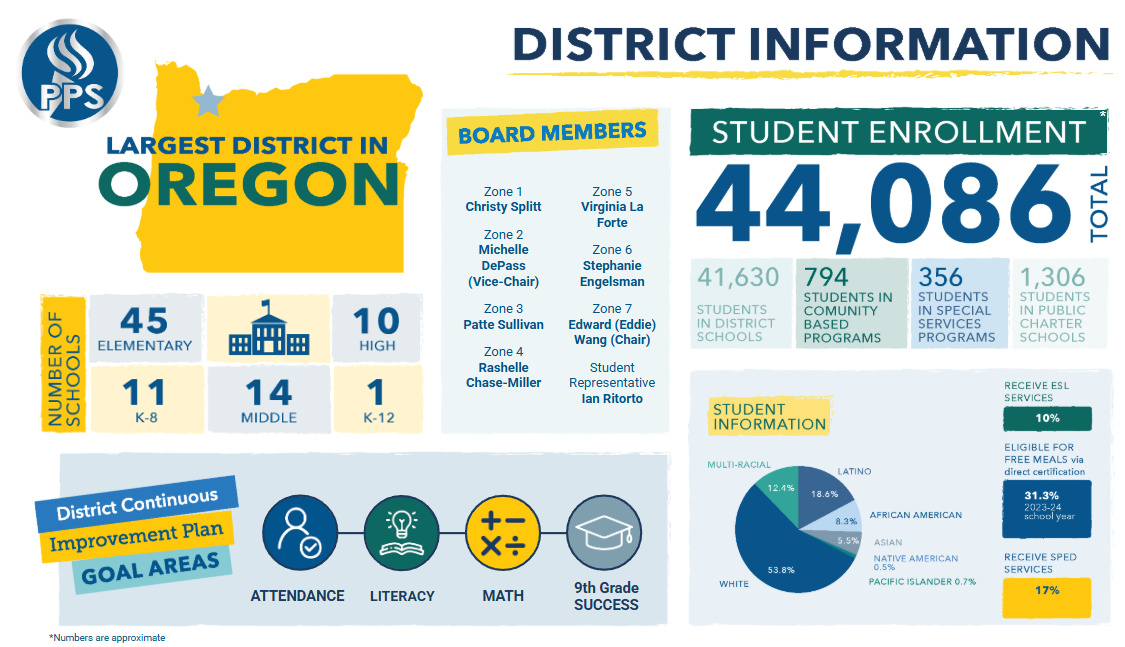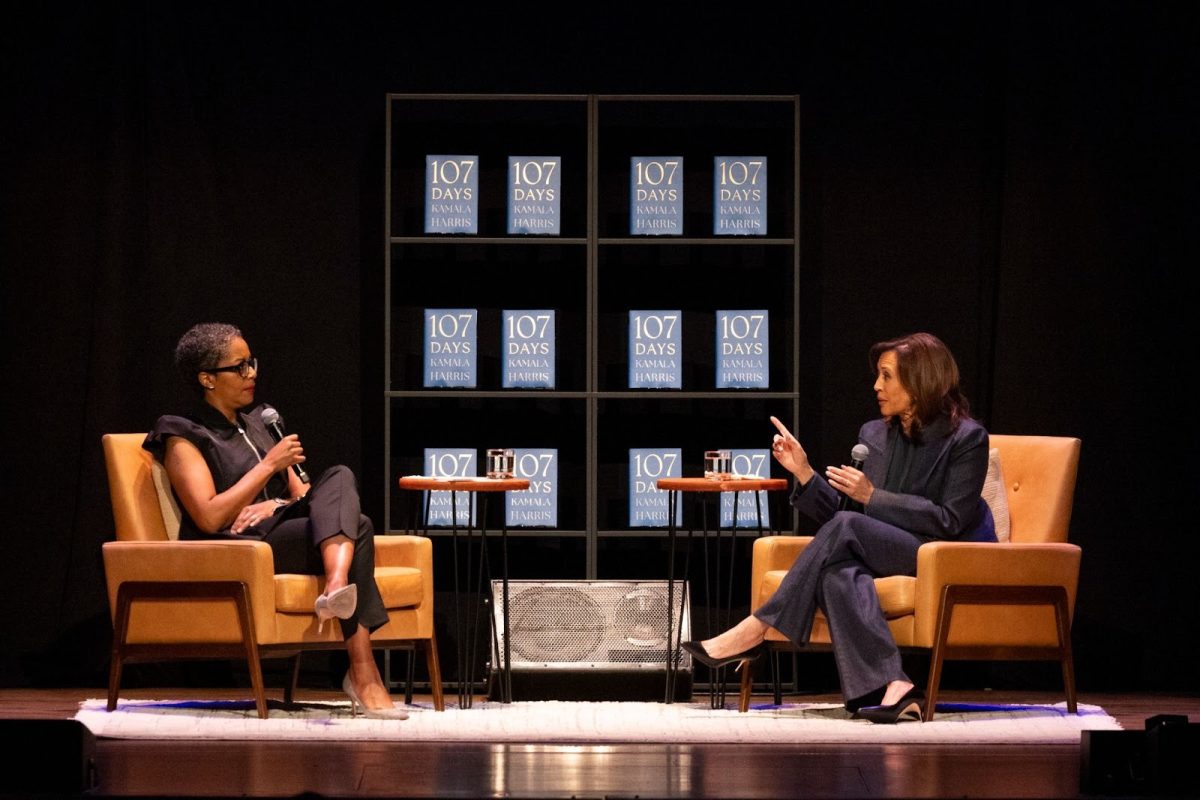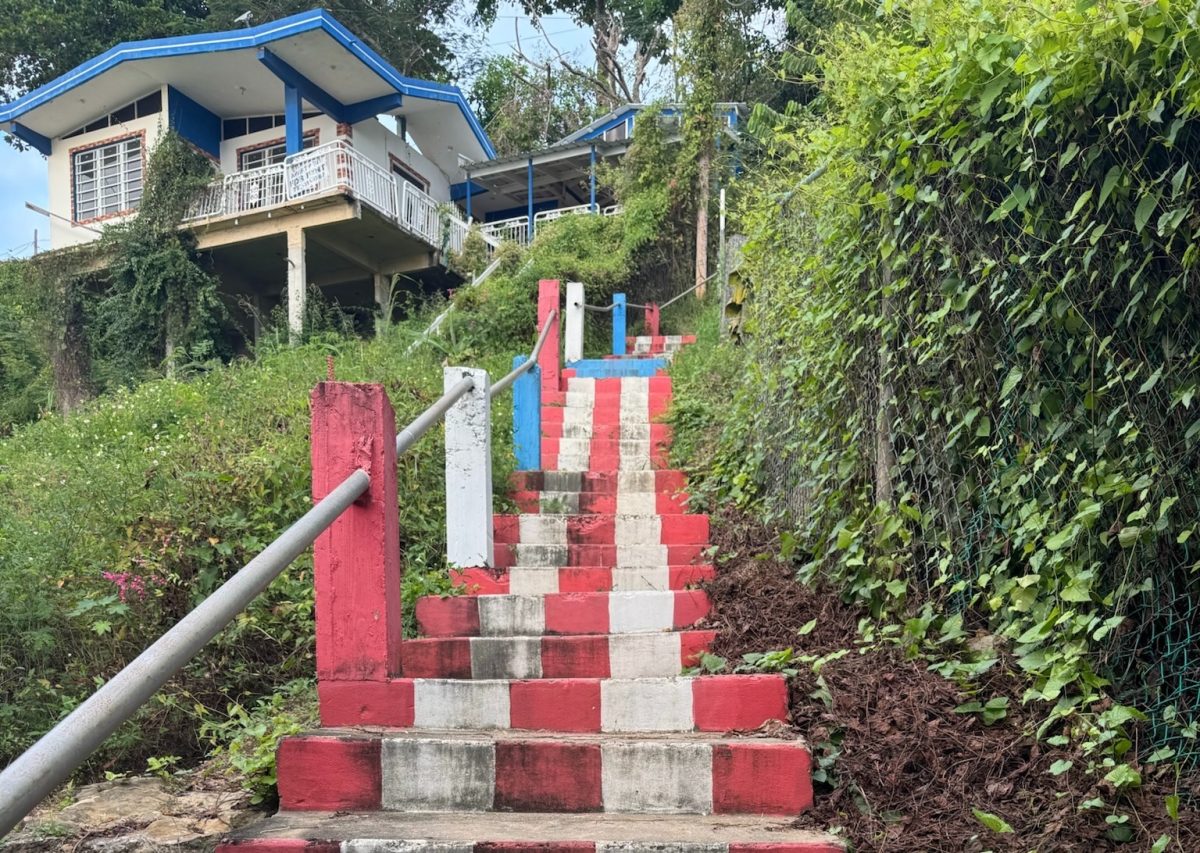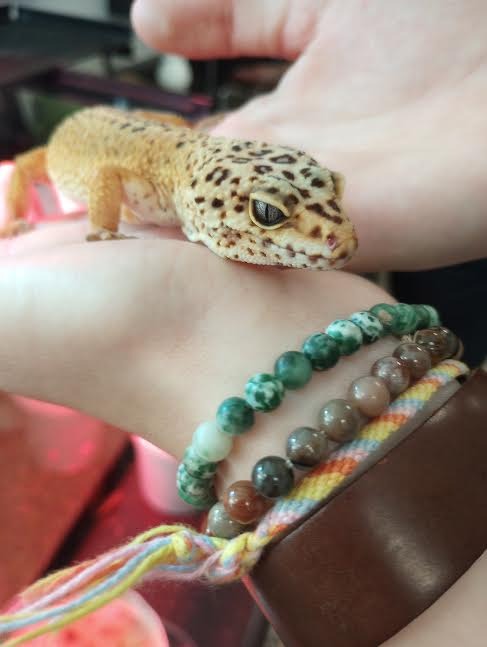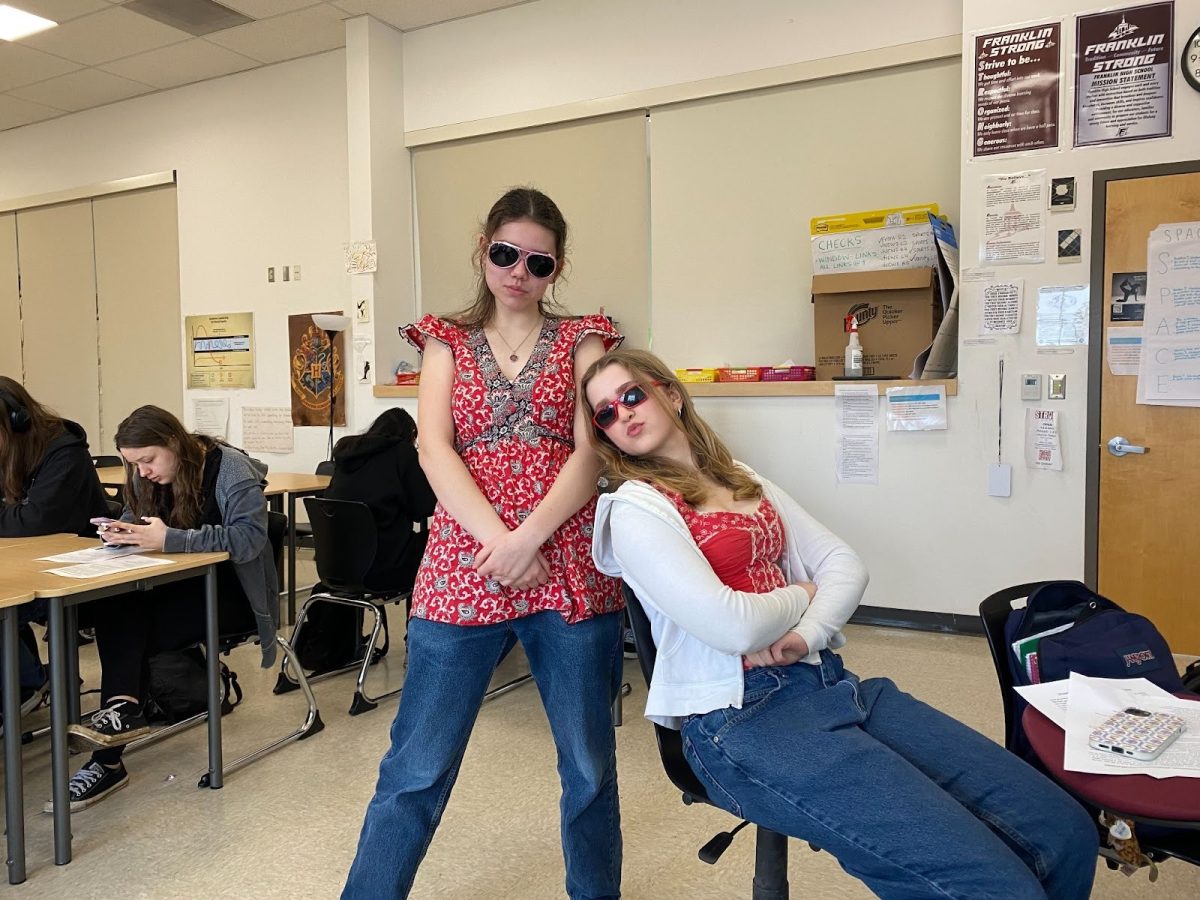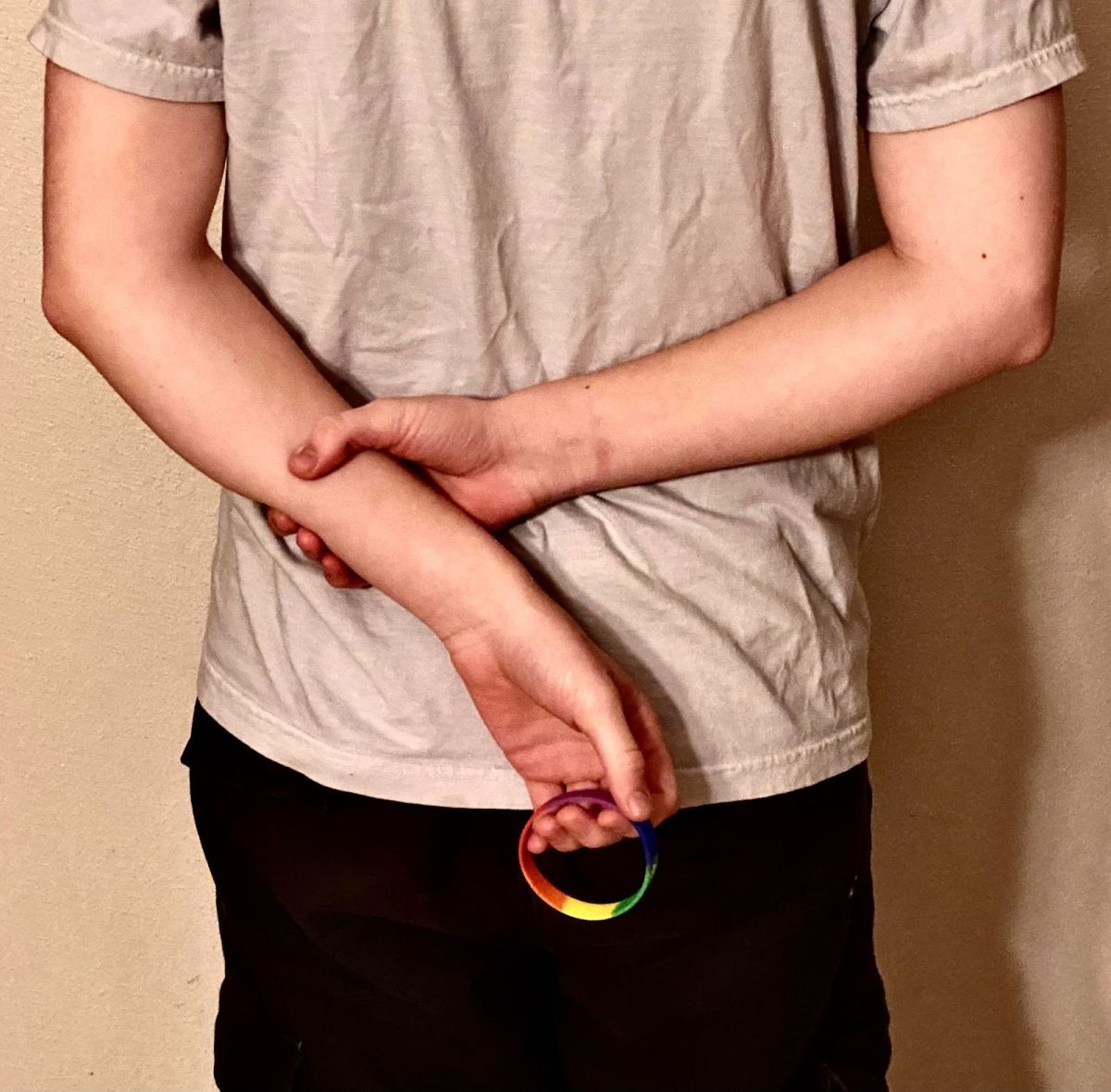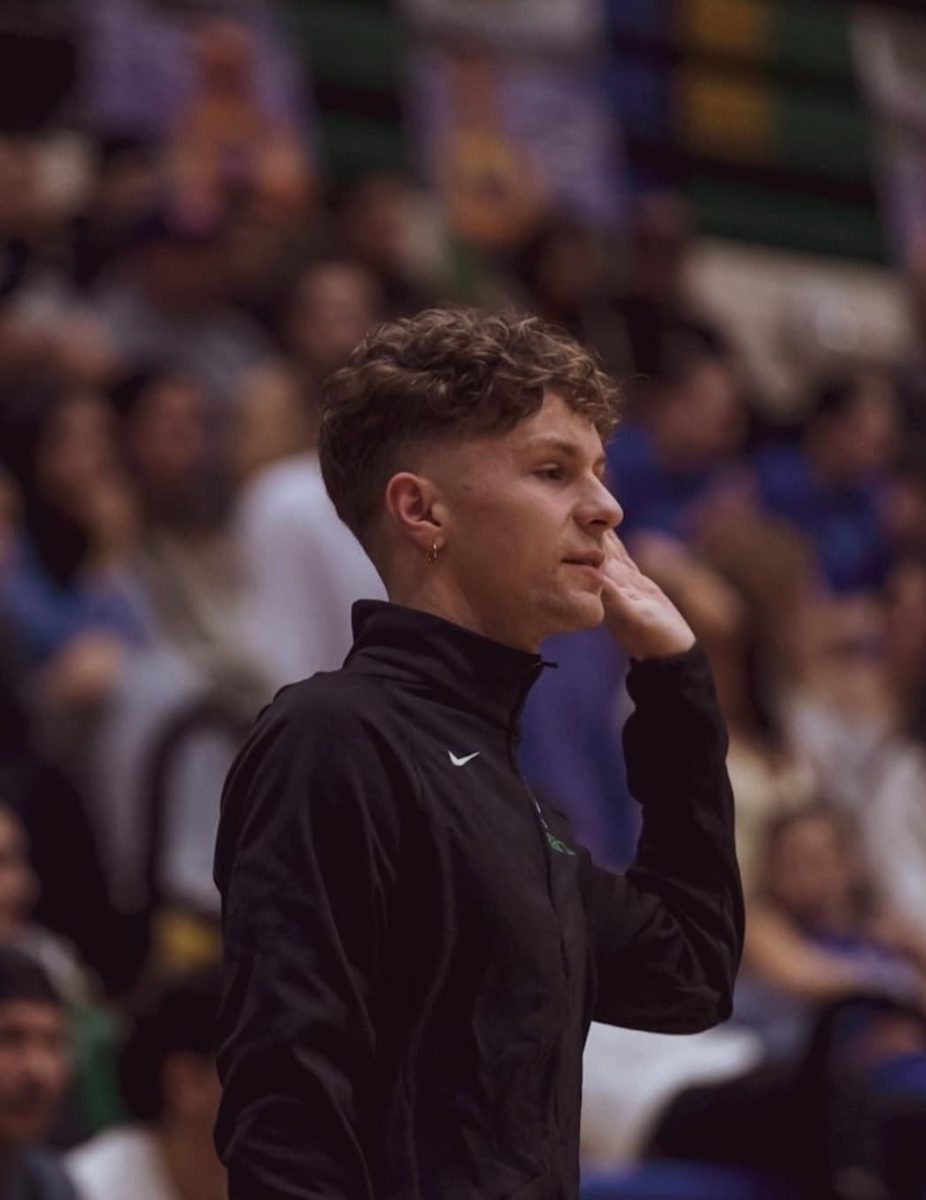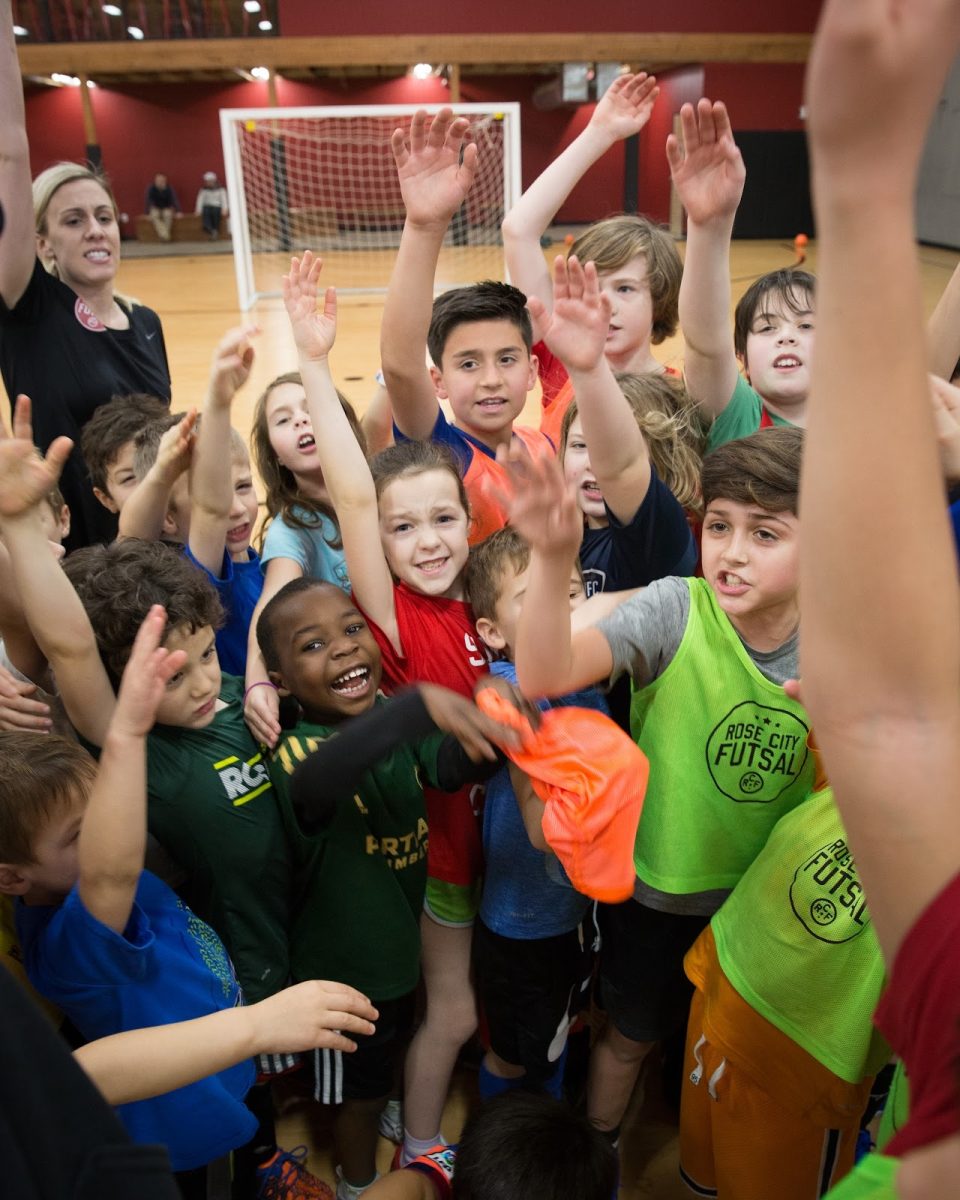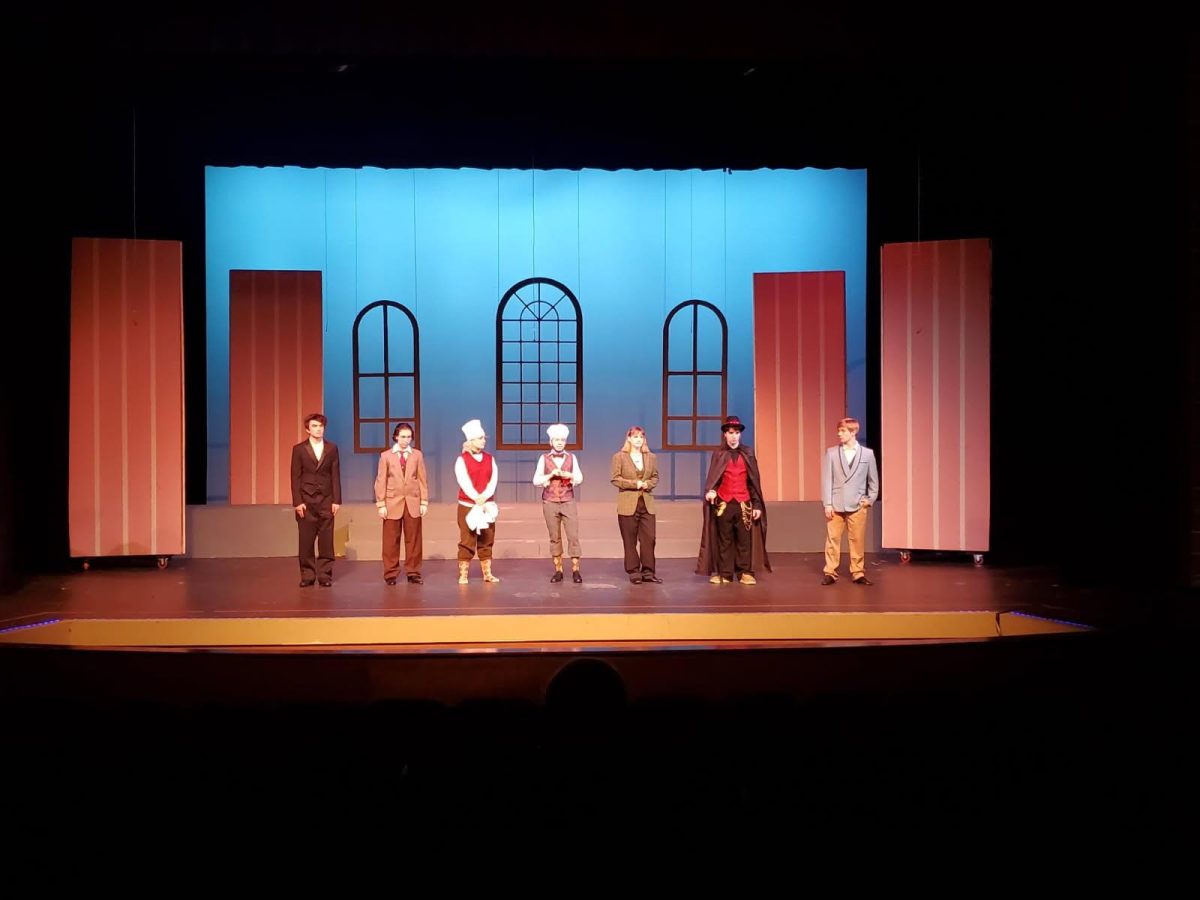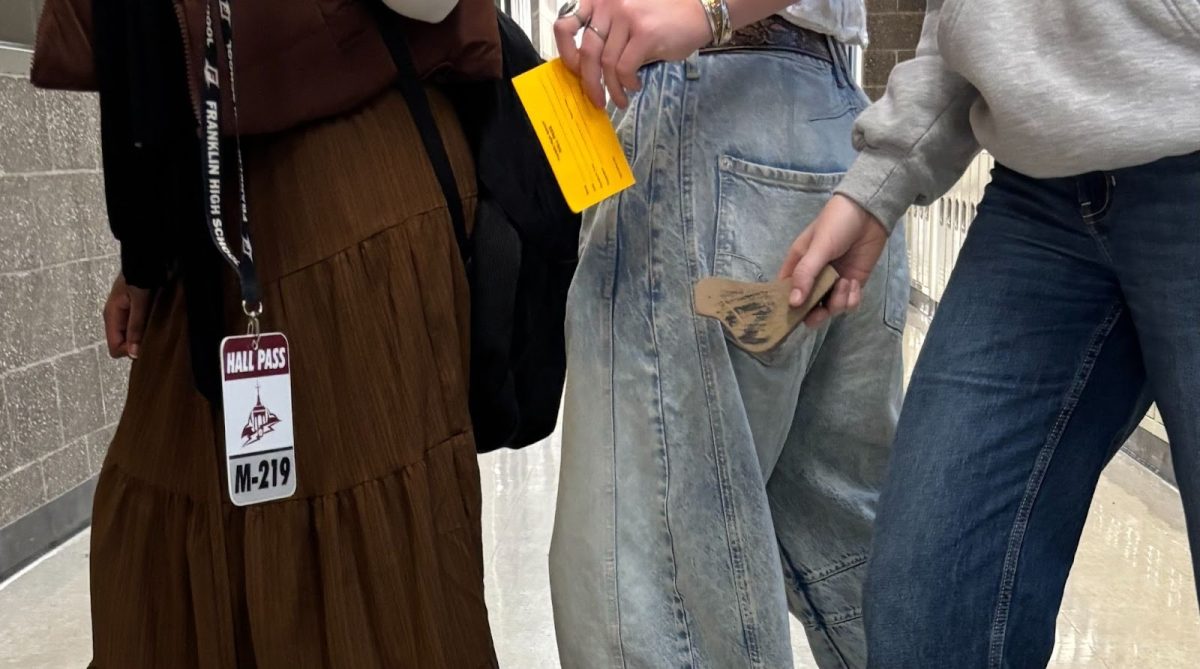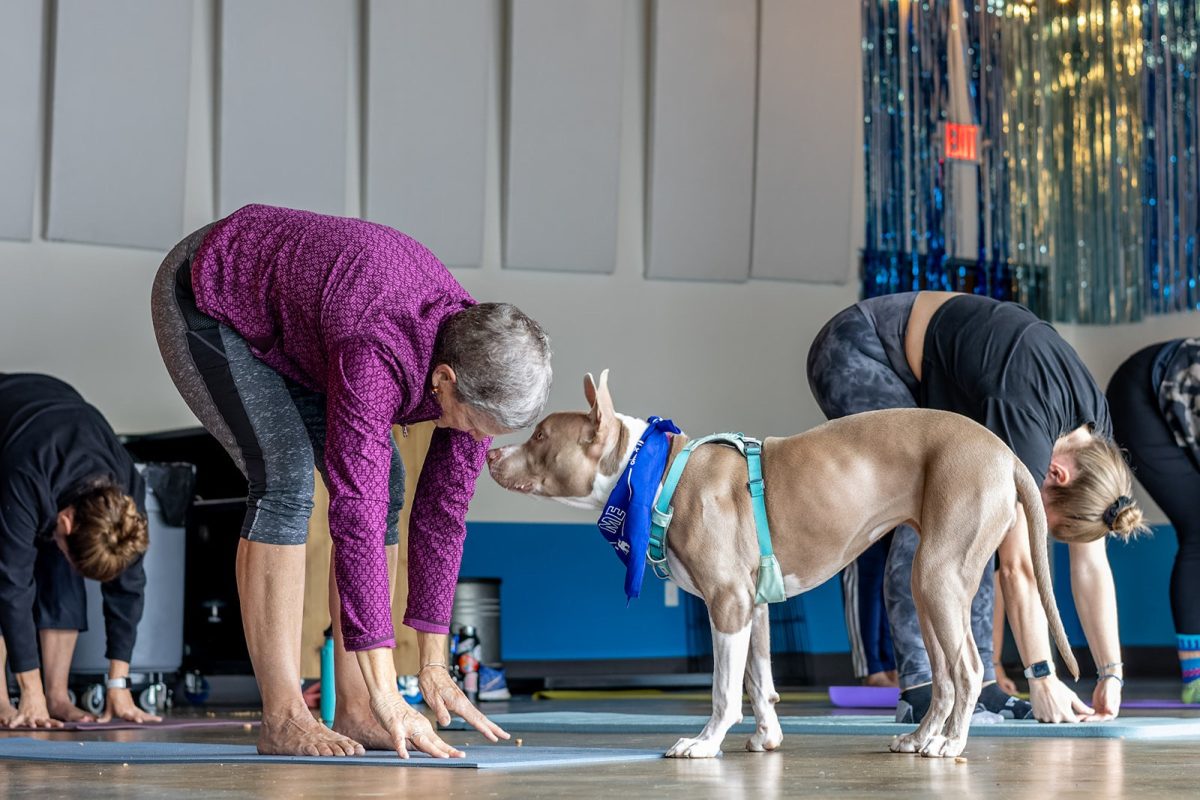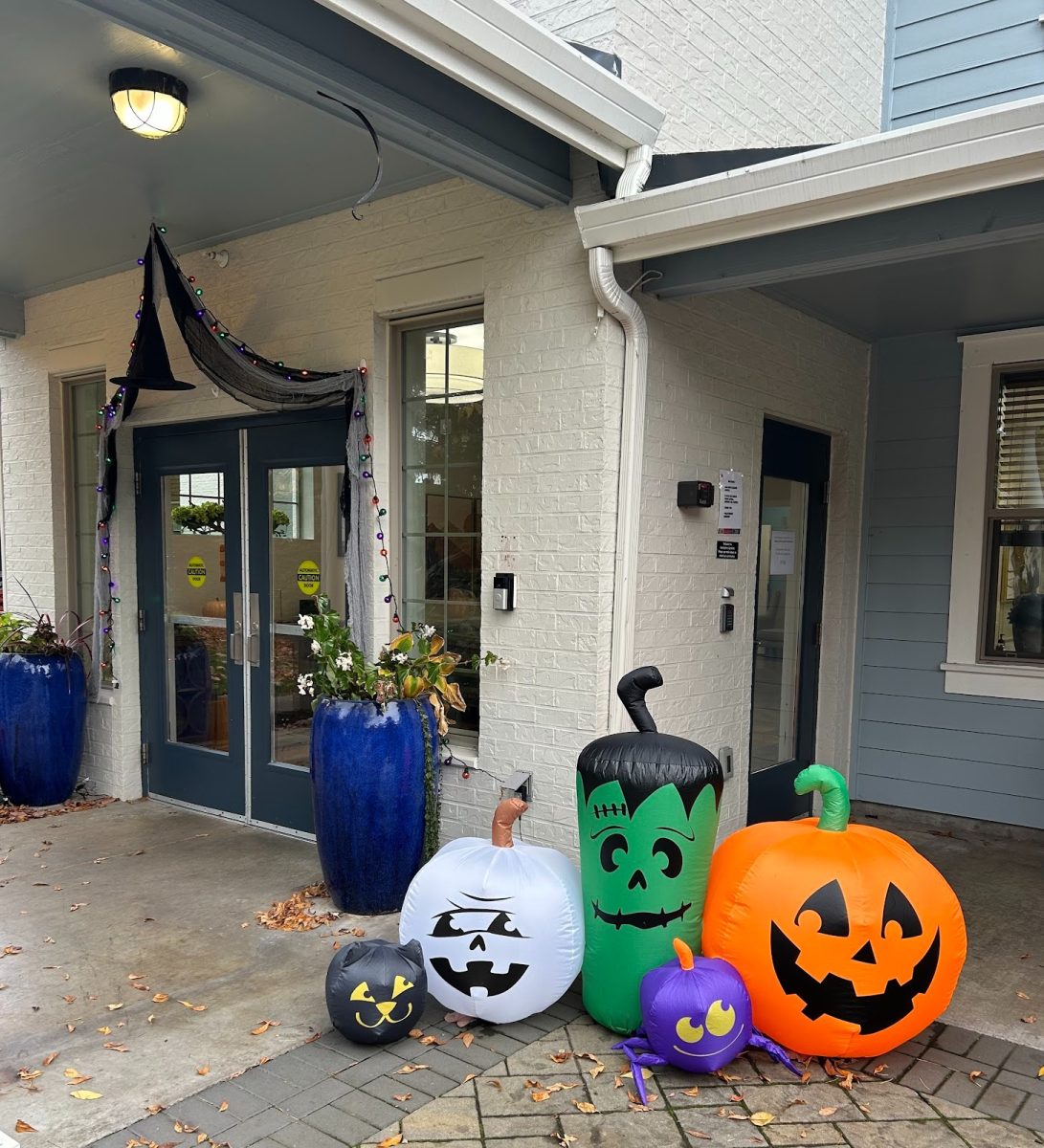In a standard week of school, the average Franklin student will spend roughly 30 hours in the classroom. The classroom is a highly organized space where a multitude of factors come together in order to make your 30 hours either boring or engaging, exclusionary or inclusive, valuable or ineffective. So what makes your favorite teacher so likable or your worst class such a drag to sit through? The high school experience is often simplified to understanding curriculum, passing the class, and moving on. When looking at the inner workings of teaching styles and practices, one can begin to see how classes are able to break through the monotony.
A good teacher or class has the ability to imprint perspectives, behavior and knowledge that students carry with them long after leaving the school. “We want students to leave high school, being able to advocate for themselves, being lifelong learners, and being resilient. So when we can create those opportunities in the classroom for students to grow those skills, then we’ve done our job,” says Franklin Vice Principal Julie Rierson. “To leave school still wanting to learn and love learning, I think it’s pretty powerful and gets you a long way. And that is probably more important than something like, ‘Do you know what year the Civil War started?’”
Many American institutions, including the public school system, arose from oppressive, top-down practices, but good teaching can change those systems. In order to learn more about the vocation of teaching, one can turn to critical pedagogy, which works as a philosophy of education and sociology to better understand how to maximize education and uproot inequities through the art of teaching. After a long stretch of teaching English in many forms, Pacific Northwest College of Arts (PNCA) at Willamette University Professor Doctor Shawna Lipton now teaches Critical Pedagogy. “I realized that what I was teaching was kind of less important than just the way I was teaching it and the teaching itself,” she says.
There is no ‘one size fits all’ approach to teaching; some students may thrive with one style of teaching, while their peers may need something completely different to best serve them, making it hard to find a sole standard for facilitating learning environments. Dr. Lipton lays out a general description of an ideal learning environment as, “A space that people are happy and excited to come to […] where everyone can feel like themselves… and be present and engaged, and feel accountable in the space.” In a time when challenges are unpredictable and persistent, preserving a safe, fun space in the school is a main priority for Lipton. When observing classrooms, Vice Principal Rierson searches for similar aspects: “I think what I’m looking for is evidence that what I’m seeing is a community of learners, that students have trust in their teacher and with each other to take risks, and that they’re active in their learning.”
Franklin’s mission statement echoes a similar sentiment: “Franklin High School engages each and every student with instruction based on both tradition and innovation that broadens and deepens knowledge, increases skills and inspires confidence. Providing a diverse and supportive environment, for our educators, family and community to prepare our students for a strong future and appreciation for lifelong learning and service.” The statement represents the continued goal of embedding a hunger for the education in front of them and what is to come.
Dr. Lipton recognizes that high school poses a unique challenge as opposed to post-secondary education; “I teach at a college level so I can already assume, ‘Hey you chose to be here, and you don’t have to be here,’ which is different in high school.” The trick then becomes how teachers can empower students to feel like they want to be and are choosing to attend their classes.
Ruben Navarrete, better known as “Mr. N,” is a fan-favorite Spanish teacher at Franklin. As they filter in from lunch, his Spanish 3-4 students fill his small basement class with energy. He walks around the classroom informally conversing with various students about their winter break and life outside of Spanish until well after the bell has rung. Only when he’s satisfied with his conversations does he transition into attendance, completed by having each student share at least one word in Spanish to characterize how they are feeling in the moment. Then he reveals, “la pregunta del día” or ‘the question of the day.’ Today the question is, “What is your favorite prank from Home Alone?” Students submit their argument blurting out, “hot doorknob,” or, “paint canister,” which is met by an outburst of agreement or disagreement from various corners of the room.
The check-ins and silly questions are unassuming, but upon closer inspection play a key role in creating the welcoming conditions for learning. Dr. Lipton hints at the purpose of these practices, saying, “The ideal of a class would be that everyone is engaged and participating in some way.” Check-ins are a way for everyone to get centered at the beginning of the class in a low-stakes activity that encourages participation and sparks engagement that the instructor hopes to continue through the remainder of the class. At the same time, Mr. N is both adding energy to the room while not centering himself in the conversation. “I think on one hand a teacher should be an aspirational figure. You should be dynamic. You should be engaged […]Then on the other hand, it shouldn’t be all about you; the teacher’s role should also be to fade into the background in certain ways so the students can take over,” remarks Lipton.
While arguing over a scene in Home Alone is not a very intense subject, the question and following conversation share a larger truth about the class; this is a safe space to share our honest thoughts and have disagreements; we can trust each other here. “It’s all about the relationship. So as we build that relationship, then that allows us to have really honest and hard convos, and we may disagree, but the relationship is there to withstand whatever is happening,” says Mr. N.
The Home Alone debate fizzles, and Mr. N shifts to a dialogue on phone use. Students watch him pace energetically as he explains his feelings on the growing role of technology at Franklin. He asks the class to renew their commitment to the class norms collectively developed at the beginning of the year. He weaves passionately through the conversation, tying together his phone policy and the larger context of the class, school, and life. He holds the students’ attention with sincere affirming phrases like, “I want you to thrive,” and “I learn from you, you make me a better teacher,” or “I’m really grateful you’re here.”
Mr. N doesn’t stop at check-ins. His class is a continuous loop of belonging cues, indirectly or explicitly spoken, reaching out to let his students know that he cares and they should too. These communication tactics provide an alternative to traditional disciplinary-focused teaching. “I think that the approach has always been from a negative point of view, like ‘you’re doing this wrong,’ then people interpret that as ‘I’m bad.’ But if you change that to a positive tone, like, ‘I know that you’re capable of putting your phone away, I know that you have the skills that can help you,’ it shifts the mindset from ‘I can’t do this’ to ‘I’m able to do it’,” says Mr. N.
In addition, by connecting even his phone policy or the second year Spanish class to the real world, Mr. N instills a sense of purpose in his students. Getting students to buy into what a teacher is saying is a huge issue, shares Dr. Shawna Lipton. “The biggest complaint is students don’t understand ‘why.’ They can’t connect to what they’re doing because they feel like it’s meaningless […] I think it’s important to have a free space to talk about the real world and what’s really happening and not pretend that our learning just happens in a bubble.” Mr. N’s guiding principles, written on a blue sticky note, are a list of three questions inspired by well known pedagogist Gary Johnson’s Achievement Triangle: “What do I need to know about myself? What do I need to know about my students? What do I need to know about my practice?” The questions inform how he designs his daily lesson plan. Mr. N sums it up saying, “The more that we know ourselves, the more that we get to know our students, who they are, what their needs are, what support they need; then that should have an impact on how we deliver lessons.”
Pending the end of the semester, the typical math class is filled with anxious students preparing for a large make-or-break final exam. Trevor Butenhoff’s fourth period geometry reflects a different reality. Students are loud and cheery as they walk into the classroom. Mr Butenhoff, popularly nicknamed “Boots,” encourages students to complete one of the warm-up questions on the board in front of the class if they feel comfortable, or as he says, “bold and zesty.” After all questions have been answered, Boots switches gears to a check-in, similar to Mr. N’s, asking individuals “Why is it a beautiful day for math?” Students respond, citing the rainy weather or the fact that it’s “Math Wednesday!” The group spends about ten minutes giving their replies before transitioning into the day’s work. Boots incorporates a legion of low-stake ways for students to show their comprehension such as keeping personal notebooks with worksheets, doing verbal and written responses, and taking daily quizzes. The day is full and purposeful, but not without time for a game or two of ‘Skill’; Boots lays out a target flat on the ground and calls up students from various table groups to compete for a prize by rolling a crumpled up piece of paper from a distance as close to the center of the target as possible; it’s a shuffleboard variation that has no relation to math.
The class strikes a stunning balance between fun activities and focused learning, all tied together with Boots’ light, engaging demeanor. By creating a collection of different mediums in which content can be practiced, individuals are given agency to find how they can best learn and demonstrate their knowledge. Vice Principal Ms. Rierson believes that this kind of self-discovery and flexibility in learning are crucial in creating a rich classroom environment. “Are you maximizing your evidence of ability?” or “Are you able to find different modalities for students to be able to demonstrate their learning?” are typical guiding questions Ms. Rierson uses to help teachers.
Tests make up 100% of his students’ grades, but not in a scary way; “When the test day comes around there’s already a bunch of feedback between the two of us, me and the student, about whether the learning target has been achieved, so when the test day comes around it’s easy money,” says Boots. He attributes his lack of a final exam to the fact that the finals schedule doesn’t give students enough time to carry out the unlimited amount of revisions he permits if they’re not happy with their grade. Daily quizzes or warmups shape what Boots prioritizes in the day’s lesson. “A teacher’s job is to scaffold and create tasks that are attainable; we’d say what’s in your zone of proximal development. So it’s kind of like knowing what your students are capable of and like designing tasks that with a little teacher push are attainable,” remarks Boots.
In a year plagued by obstacles to education, teachers and students alike are stretched to their limits. It’s important to understand that students play just as large of a role as teachers when it comes to creating the class norms, values, and overall environment. “We’re all going to come to class tired and stressed out and living in a pandemic and stuff, but how can you protect that little bit of time that you have together and make it a place where people want to be […] that space is what you create as a group,” says Dr. Lipton.
Let it be clear, there is no roadmap to the perfect class. No activity or exact teaching style guarantees the best rate of engagement or highest test scores. Each class is different, posing unique challenges and opportunities. Each teaching style and class activity presents its own advantages and disadvantages. Educators can lay out conditions for learning through structure, style, or method, and it’s the students’ job to embrace the opportunity and become agents of their own education.


